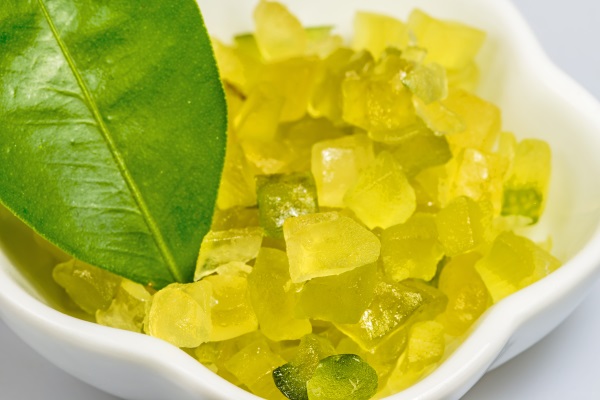Candied Buddha’s Hand Citron: Discover the Benefits and Tradition
Buddha’s Hand Citron is a distinct citrus fruit known for its finger-like segments. Unlike other citrus fruits, it doesn’t have pulp or juice. Instead, it’s prized for its aromatic rind. The fruit’s shape resembles a hand, leading to its name. This citron variety, Citrus medica var. sarcodactylis, holds cultural and culinary significance. You can use the fruit’s zest in baking and perfumery or prepare it in a candied form to enhance dishes.
Historical Significance and Uses
Buddha’s Hand Citron has a rich history, originating from India and China. Buddhist monks in the early centuries introduced this fruit to China, where it became a symbol of happiness and longevity. In religious practices, it often appears in temple offerings due to its hand-like shape, symbolizing prayers and blessings. Additionally, ancient medical texts document its use in traditional medicine for digestive and respiratory benefits. Throughout centuries, its culinary value also evolved, especially in forms like candied Buddha’s Hand Citron, enhancing flavors in diverse recipes and dishes.
The Art of Candying Buddhas Hand Citron
Choosing the Right Citron
Selecting the perfect Buddha’s Hand Citron ensures a successful candying process. Look for fruits with vibrant yellow color as these indicate ripeness. Check that the fruit’s “fingers” are firm and unblemished since soft spots might signal overripeness or damage. Smell the citron; a strong, pleasant fragrance suggests freshness and quality. Opt for organically grown varieties to avoid pesticide residues that could affect the candied product’s taste and safety.
The Candying Process Explained
Candying Buddha’s Hand Citron requires attention to detail and patience. Start by thoroughly washing the fruit to remove any residue. Slice the citron into thin strips, maintaining consistent thickness for even candying. Blanch the strips in boiling water for about 5 minutes, then drain and repeat this 2–3 times to reduce bitterness.
Prepare a simple syrup using equal parts water and sugar. Bring the mixture to a simmer until the sugar fully dissolves. Add the blanched citron strips and cook them over low heat. Stir occasionally to ensure even coating. Continue cooking until the citron becomes translucent, usually after 1-2 hours.
Remove the strips from the syrup and lay them out on a cooling rack. Allow them to dry for several hours. To finish, roll them in granulated sugar for extra sweetness and to prevent sticking. Store the candied citron in an airtight container to maintain its texture and flavor.
Flavor Profile and Pairing Ideas
Tasting Notes on Candied Buddhas Hand Citron
Candied Buddha’s Hand Citron offers a distinctive flavor profile. It has a sweet taste with subtle floral notes and hints of lemon and lavender. The texture is chewy and slightly crunchy, providing a pleasant contrast. When tasting candied citron, you’ll notice its complex aroma, which blends citrusy overtones with a delicate sweetness, making it a unique addition to many dishes.
Creative Ways to Use Candied Citron in Recipes
Incorporate candied Buddha’s Hand Citron into your culinary arsenal for a burst of flavor.
- Baking: Enhances fruitcakes, muffins, and cookies.
- Salads: Adds a sweet, citrusy twist to greens and grain bowls.
- Cocktails: Infuses simple syrups or garnishes for unique drinks.
- Sauces: Elevates marinades, glazes, and dressings.
- Cheese Boards: Complements cheeses like brie, gouda, and manchego.
Use candied citron creatively to explore its versatility in both sweet and savory dishes.
Health Benefits of Candied Buddhas Hand Citron
Nutritional Overview
Candied Buddha’s Hand Citron offers several nutritional benefits that contribute to your overall well-being. This citrus fruit is rich in vitamin C, providing antioxidant properties that combat free radicals. While the candied form contains added sugars, it retains vitamins and trace minerals like calcium and magnesium. The high fiber content aids digestion and can help maintain a healthy gut.
| Nutrient | Amount per 100g |
|---|---|
| Vitamin C | 50-70 mg |
| Fiber | 3-5 g |
| Calcium | 20-30 mg |
| Magnesium | 10-15 mg |
Potential Health Advantages
Candied Buddha’s Hand Citron may offer numerous health benefits due to its unique composition. The antioxidants, primarily from vitamin C, support immune function and skin health. Its fiber content can improve digestive health by promoting regular bowel movements. Additionally, the natural compounds present in Buddha’s Hand Citron, such as flavonoids, have anti-inflammatory and antimicrobial properties. These compounds may help reduce the risk of chronic diseases, although excessive consumption should be avoided due to the added sugars in the candied product. Integrating this candied fruit into your diet in moderation can contribute to a balanced and healthful nutrition plan.
Conclusion
Adding candied Buddha’s Hand Citron to your diet offers a delightful way to enjoy the fruit’s unique flavor while benefiting from its nutritional properties. Its rich vitamin C content and other essential nutrients can support your overall health when consumed in moderation. Whether you’re looking to enhance your culinary creations or boost your nutrient intake, this exotic treat can be a valuable addition to your pantry. Enjoy the blend of tradition and nutrition that candied Buddha’s Hand Citron brings to your table.





